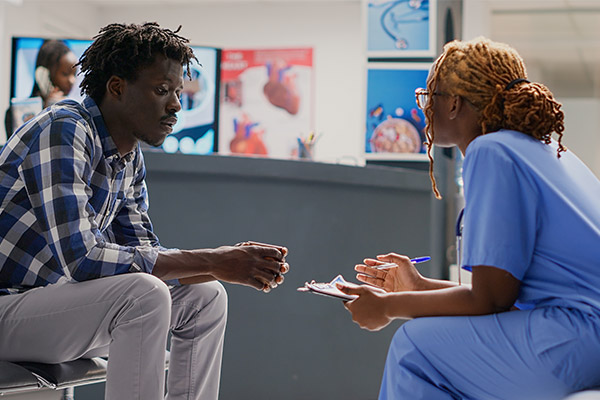We pour our efforts into research, striving for breakthroughs that change lives. But are we truly listening to the people who those breakthroughs are meant to help?
I've experienced firsthand how a drug's success doesn’t depend on just scientific innovation, but also on human connection and translating that innovation into improved outcomes for patients and communities. Traditionally, drug development and commercialization have been viewed as linear processes, with community engagement often relegated to post-launch marketing efforts. But what if we took a more holistic approach that integrates community engagement along the entire continuum?
This strategy can have significant benefits, including improved trust (among patients and healthcare providers), better trial designs, and potentially increased patient access and adherence. Let’s use the “drug launch” as an example for exploring how community engagement can be strategically incorporated to enhance development and commercialization processes while supporting underrepresented patient populations.
Pre-Launch Engagement: Laying the Foundation for Success
I’ve had the opportunity to bring several new indications to market and know that the period leading up to a drug launch (about 1-2 years before the anticipated PDUFA date) is critical for laying the groundwork for successful commercialization. As cross-functional teams (i.e., Clinical Development, Clinical Operations, Marketing, Medical Affairs, Patient Advocacy, etc.) prepare for regulatory approval, they can all weave community engagement and the gathering of patient insights into their strategic plans to enhance and inform pre-launch activities.
Improved Clinical Trial Designs and Recruitment
Community engagement before and during a Phase 3 study (with study enrollment often occurring simultaneously with launch prep) allows for realistic patient perspectives to be incorporated into research protocols—making participation feel less like a clinical trial and more like a shared journey. This can lead to:
- A refinement of study endpoints and reduction of logistical burdens that make recruitment and retention challenging.
- Creation of patient-facing materials that truly resonate and inform the community about the chance to participate in the study.
- The opportunity to build sustained relationships with community stakeholders and clinical trial sites that encourage recruitment of representative patient populations, helping to ensure results reflect the real world.
Early Disease Education and Awareness
Engaging patient advocacy groups, community leaders, and community-based providers during pre-launch helps with distribution of accurate and relevant disease information that can be tailored for population-specific needs.
This proactive approach helps address misinformation and build trust within communities early on. I’ve seen how it can be especially impactful when trying to reach underrepresented communities who are often disproportionately impacted by certain conditions, yet overlooked.
Understanding the Clinical Landscape
Direct engagement with patients, caregivers, and providers during the pre-launch period allows for deeper understanding of aspects related to the clinical landscape, including unmet needs, existing treatment challenges, and patient preferences—which may vary across different subsets of each community.
These insights can inform development of unique commercial strategies that ensure the drug's value proposition resonates with intended audiences. They can also help better define the target product profile, and how it may be differentiated from competitors.
Drug Launch: The Inflection Point
The launch period, marked by regulatory approval and branded promotional activities, represents an inflection point—the start of bringing a treatment to market. It isn't just about press releases. It’s also about turning up the volume on community connections that have been previously built. And this step is when community engagement can be amplified to maximize impact.
Amplified Disease Awareness and Education
By leveraging established relationships with patient advocacy groups and community stakeholders, research sponsors can disseminate educational materials and resources on a wider scale. Using digital platforms and social media can further expand reach for distribution efforts.
In-person community launch events in collaboration with patient advocates, community partners, and key opinion leaders—who are front and center sharing their stories and experiences—can increase visibility of the sponsor, disease state, and branded drug.
Targeted Communication and Support
Patients aren’t all the same. That’s why personalized communication and support programs matter. Culturally competent materials, financial assistance, and tools that make adherence easier ensure that relevant information is readily available and addresses access needs that may improve treatment outcomes. And leveraging community input in the development of these assets ensures that they are meaningful for intended users.
“Patients aren’t all the same. That’s why personalized communication and support programs matter.”
Gathering Real-World Evidence
Collecting patient, caregiver, and prescriber insights during the launch period provides valuable information into the drug's real-world efficacy and safety, along with a better understanding of access challenges. During my time in the field engaging community members whose insights vary from town to town and zip code to zip code, I learned it’s important to be intentional when collecting data and nuanced when assessing responses.
Results from carefully conducted community listening activities can be used to address patient and prescriber concerns, revise medical affairs and marketing strategies, and inform future research.
Post-Launch Engagement: Continuous Improvement and Long-Term Impact
The relationship with the community doesn't end after the immediate launch period—conversations must continue throughout the duration of the drug’s lifecycle. Post-launch engagement is essential for sustaining the drug's success and ensuring continual benefit to patients, caregivers, and healthcare providers.
Ongoing Insights Gathering
It’s important to stay connected. Feedback mechanisms such as community surveys, forums, and patient advisory boards are a means for collecting data points and personal stories that can inform commercial strategies, product improvements, and development of new indications.
Phase 4 Clinical Trials and Real-World Data Collection
Phase 4 trials, conducted after regulatory approval, may answer additional research questions, and gather real-world evidence on the drug's long-term safety and effectiveness. As with the pre-launch period, community engagement can facilitate recruitment for these trials and ensure that they include a representative population.
Building and Maintaining Long-Term Partnerships
Continuing to strengthen relationships with community-based organizations and patient advocacy groups, even after the drug has been on the market for a while, fosters affective trust and collaboration, leading to improved outcomes and long-term partnerships that help identify additional unmet needs and drive innovation in future drug development efforts.
Community Is the Key to Impact
Ultimately, creating new treatments should go beyond developing and commercializing drugs. Integrating community engagement throughout the continuum, with a focus on the launch period as an inflection point, benefits research sponsors (across ALL functional areas) and patients alike. Embracing a community-centric approach that prioritizes collaboration and communication is essential for translating scientific innovation into improved outcomes. It’s key as we strive to achieve health equity for the communities we serve.
Ready to learn more about how Acclinate drives health equity across care? Connect with our team.














